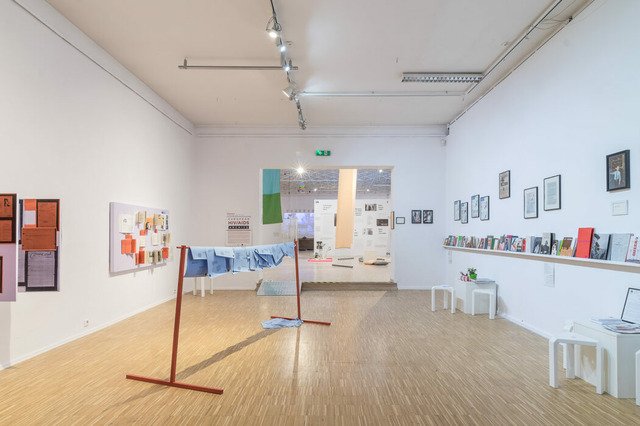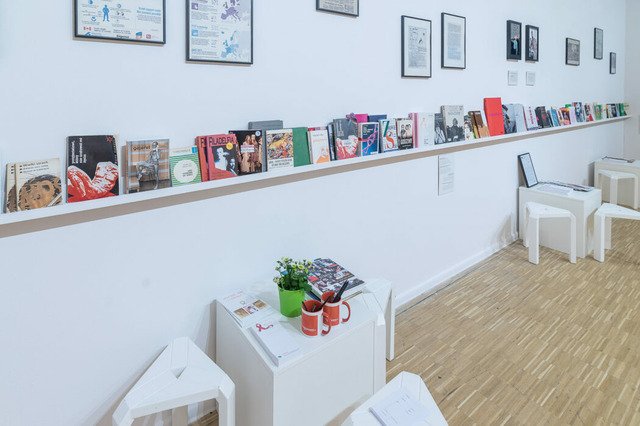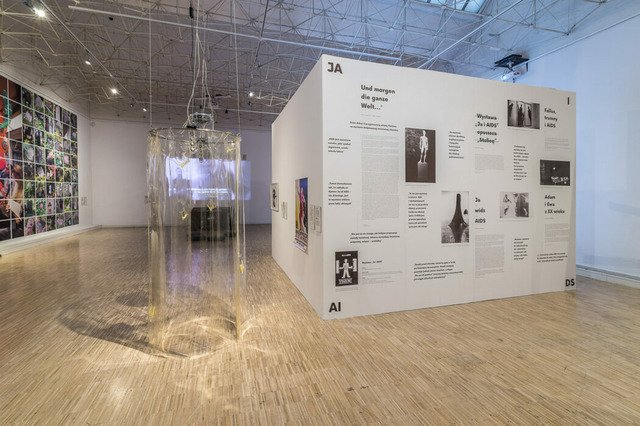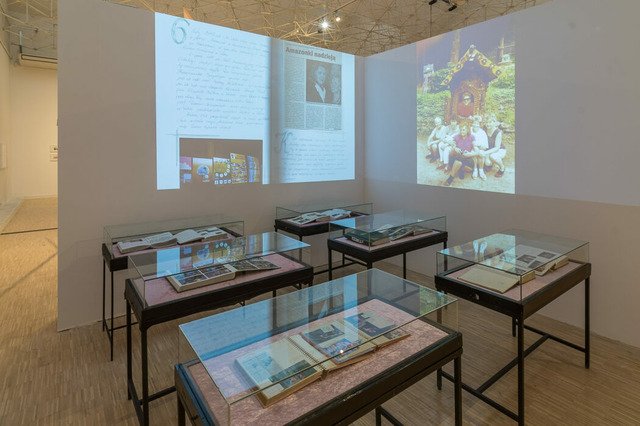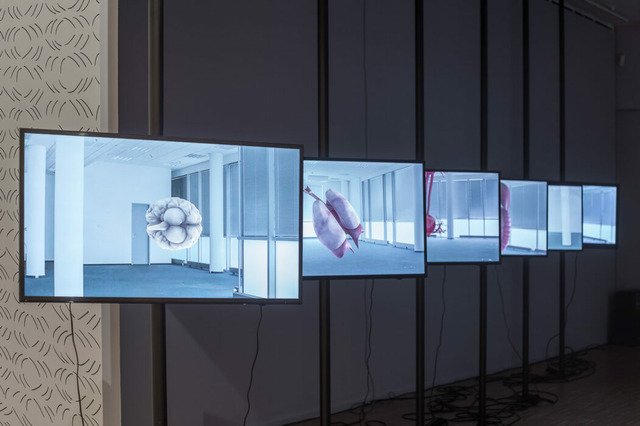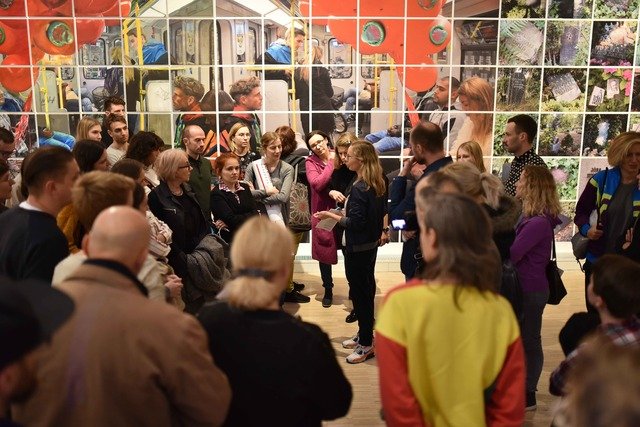Creative Sick States: AIDS, CANCER, HIV
Research Group: Luiza Kempińska, Paweł Leszkowicz, Zofia nierodzińska, Jacek Zwierzyński
Participants: Amazonki, Szymon Adamczak, Dobrawa Borkała, Vala T. Foltyn | Valentine Tanz, Barbora Kleinhamplová, Bartek Arobal Kociemba, Olga Lewicka, Piotr Macha, Iza Moczarna-Pasiek, Piotr Nathan, Jaśmina Wójcik, Inga Zimprich
Location: Galeria Miejska Arsenał, Poznan
Fragment of the curatorial text:
Illness is a practice, not a metaphor; it is a daily antiretroviral drug intake and a chemotherapy treatment applied periodically, it is a hand rehabilitation with lymphoedema at the Tryton rowing club. Yet, this is, most of all, solidarity that gives strength and unrelenting criticism of a society that grounds itself in the myth of a self-sufficient individual. The creativity of disease doesn’t manifest itself in a creative fever and a discharge of a genius. The Amazons demonstrate that it is quite a normal matter to create habitable worlds. You may start with a shared portion of morning gymnastics, and in the afternoon go out into the streets to manifest your rights.
(…)
The exhibition entitled "Creative Sick States: AIDS, CANCER, HIV" aims to cast a spell on reality in which there is no space for the body, in particular, the seropositive body, the one after mastectomy, with abnormal abilities, dependencies, pains, panic attacks, and inflammations. We assume that illness is real, and patients’ problems are social challenges that we need to deal with together. Health is a fiction, an impossible ideal to achieve. We need to normalise and socialise the disease because health has died, or perhaps it has never existed?
We present the art of artists who live with HIV. It is, therefore, an exhibition revealing and breaking the invisibility taboo. It states the seropositivity in the context of breast cancer. This context aims for normalisation of life with HIV so that it ceases to be a stigma. The Amazons have become the heroines of modern times. We would like to look at people who experience life with HIV in a similar humanistic and, to a certain extent, a heroic perspective of everyday life.
(…)
"Creative Sick States: AIDS, CANCER, HIV" is an art exhibition, though it also postulates access to knowledge. For that reason, apart from presenting art, we show visual, educational materials about HIV and AIDS, breast and prostate cancer, stoma and HPV. These materials deepen the therapeutic nature of the exposition, which is accompanied by meetings and workshops. Arsenal becomes a meeting point for art, education and care. In an interdisciplinary way, it breaks the boundaries among various areas of care about people and the environment, proving thus that a disease is not a private matter but a political one.
More on: https://arsenal.art.pl/en/exhibition/creative-sick-states/
Translation: Marcin Turski
